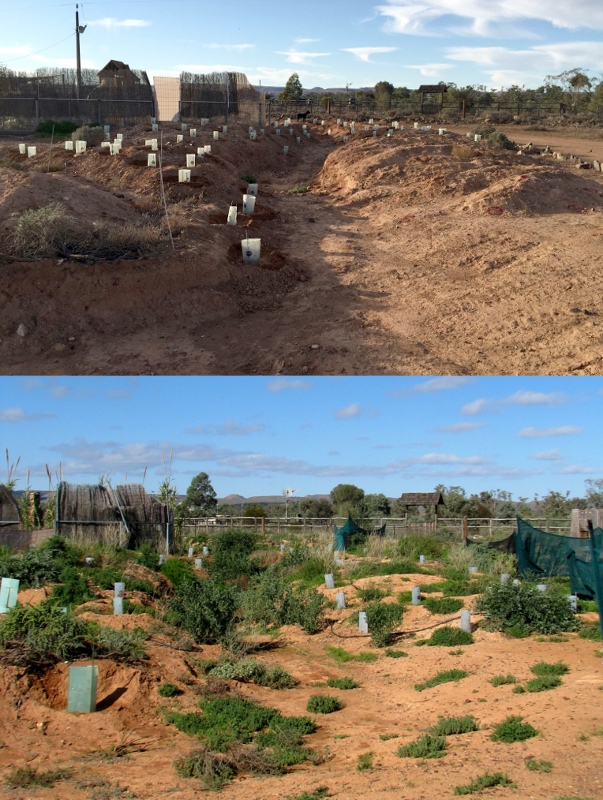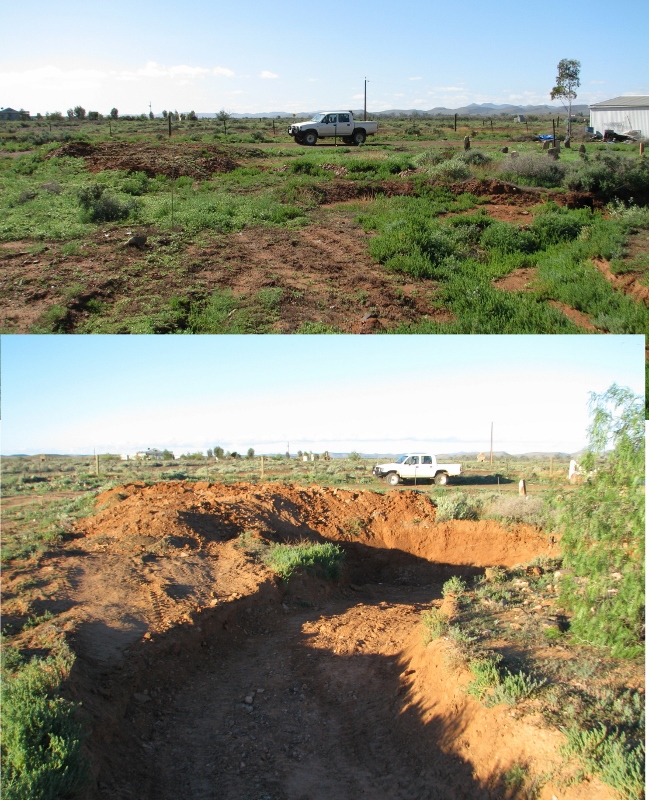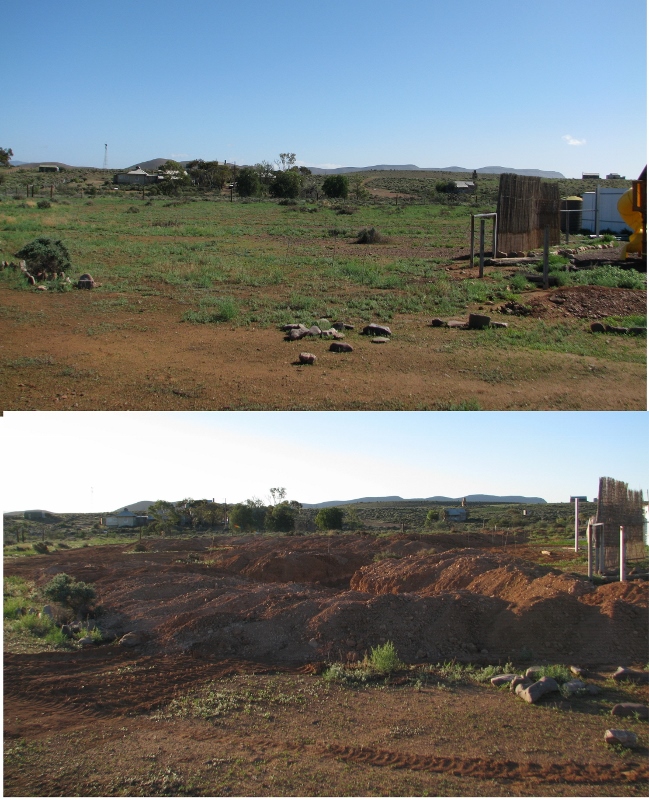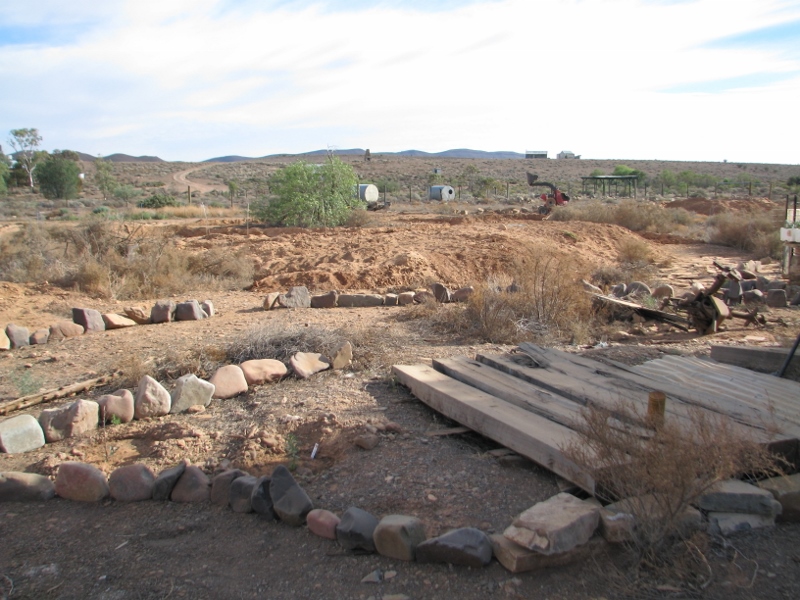With a project like this, planning is essential and over the years I have created various maps to work out positioning, planting and many other aspects of transforming our yard. In the last year or so though I’ve been working on a more comprehensive image, one which can be used as a base for other maps and will give us a good idea of how things should look when it’s “finished”.
In the last week, I was able to finally find the time to complete the last of the work on this map and convert it to digital form so I could play with it further. The original map is now on the wall in our main room – inspiration for continued productivity.
This map is based on a topographical style so the areas of blue do not represent permanent water necessarily but rather below natural ground level areas which may well fill with water during seasonal downpours. Only the deepest part of the lake is intended to have permanent water to allow for fish and yabbies, with the rest being allowed to evaporate and soak into the ground before being filled again – following the natural pattern for this area. The red lines represent fences and the buildings have cutaways to show floor material and room layout where appropriate.
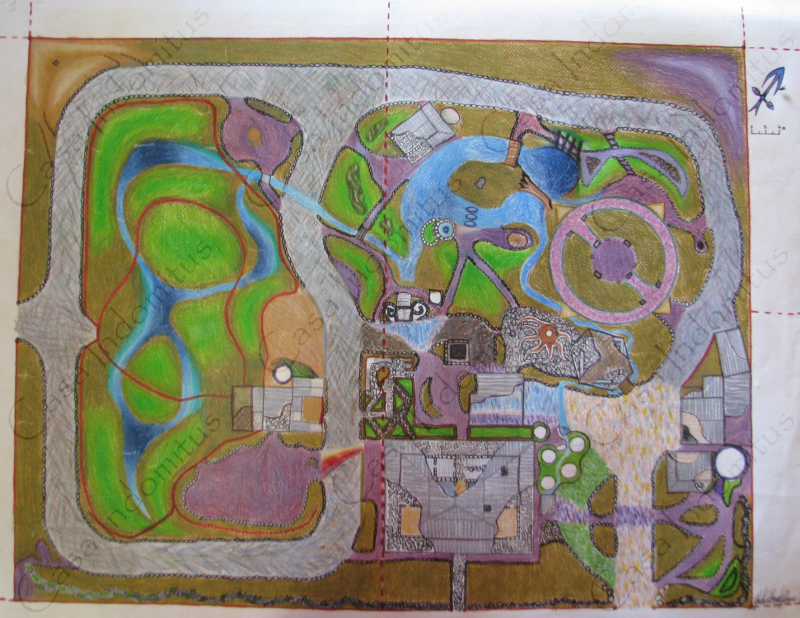
A digital image of the finished map.
Click here for a larger version
Permaculture encourages detailed planning so that trees planted are ‘in the right spot’ for their whole lives which are often far longer than those of the planters. One aspect of this planning is thinking about the frequency of use and locating things conveniently so that your ongoing lifestyle can be as relaxed and productive as possible. It’s an interesting exercise to really think about what aspects of your garden you will use more than others, especially when planning for self-sufficiency.
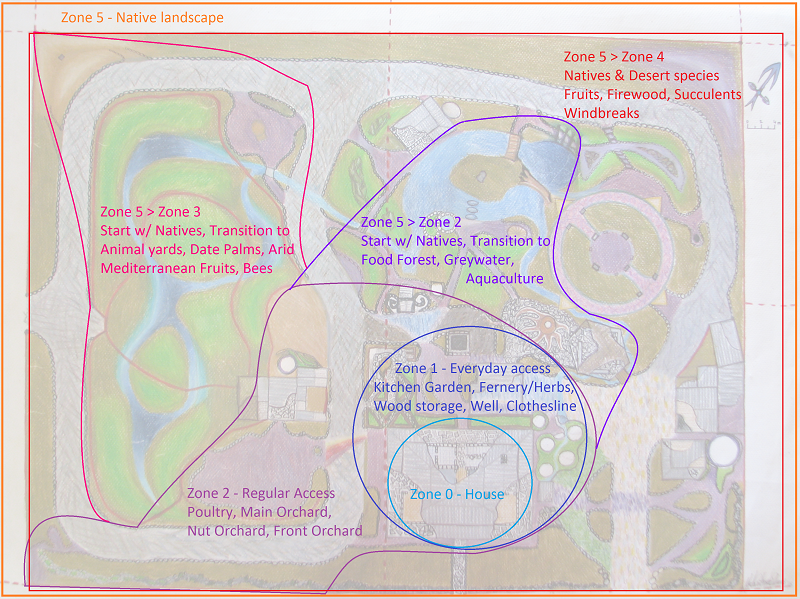
Permaculture Zone mapping for our project
For further information on this method of garden/farm planning see Permaculture Australia or any number of resources available both in print and online.
I have also made some additional detail maps which if you are particularly interested, can be found here:
The possibilities for overlays seem almost endless but that will do for playing with this now, back to actually making it happen in the real world.




